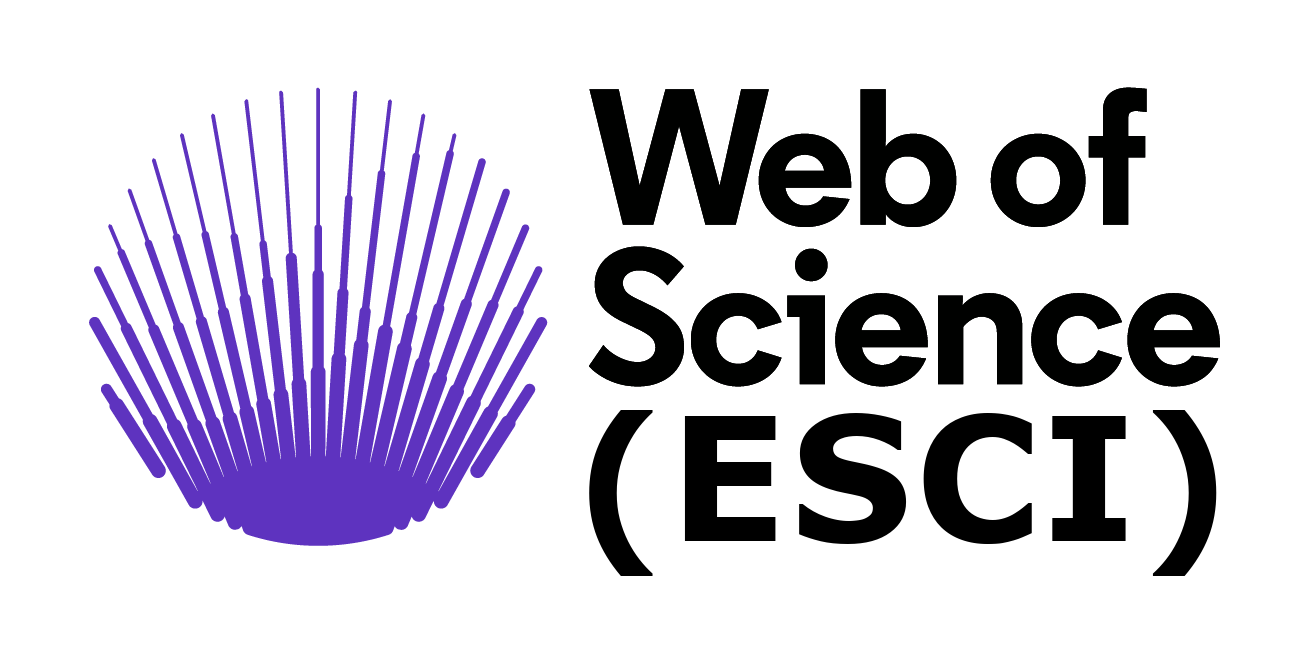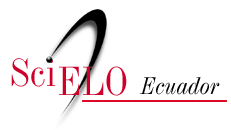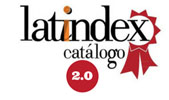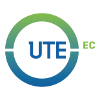Human resources - a critical success factor for quality and sustainability in the industry
DOI:
https://doi.org/10.29019/enfoqueute.1121Keywords:
Management commitment, Operators, Suppliers, QUA, SustainabilityAbstract
Quality (QUA) in industry encompasses several critical success factors (CSF), including human resources (HR), and the production process is of paramount importance; consequently, quantifying their impact and contribution is essential for sustainability. This study presents a structural equation model (SEM) that relates managerial commitment (MAC) as an independent variable, operators (OPE), suppliers (SUP), and lean manufacturing tools (LMT) as mediating variables, and QUA as a sustainable response variable. The variables were interconnected through six hypotheses, each validated using data from 286 responses to a questionnaire administered to the Mexican maquiladora industry. The SEM was validated using the partial least squares (PLS) approach, and a sensitivity analysis was also performed. The findings indicate that MAC has direct and positive effects on OPE, LMT, and SUP, with the former exhibiting the strongest influence. Similarly, OPE, LMT, and SUP directly affect QUA for sustainability, with the latter demonstrating the most significant impact. The study concludes, statistically and empirically demonstrates that human factors (managers, SUP, and OPE) and production systems can ensure product QUA and economic sustainability, thereby reducing defects and customer returns.
Downloads
References
[1] M. M. Parast, A. Safari and I. Golgeci, “A Comparative Assessment of Quality Management Practices in Manufacturing Firms and Service Firms: A Repeated Cross-Sectional Analysis,” IEEE Trans Eng Manage, vol. 71, pp. 4676-4691, 2024. https://doi.org/10.1109/TEM.2022.3221851.
[2] R. E. Worlu, A. A. Adeniji, T. M. Atolagbe and O. P. Salau, “Total Quality Management (TQM) as a tool for sustainable customer loyalty in a competitive environment: A critical review,” (in English), Acad. Strateg. Manage. J, vol. 18, no. 3, pp. 1-6, 2019. Available: https://bit.ly/3DBLgEn
[3] A. S. Francois Koukpaki, K. Adams and A. Oyedijo, “The contribution of human resource development managers to organisational branding in the hotel industry in India and South East Asia (ISEA): a dynamic capabilities perspective,” Employee Relat., vol. 43, no. 1, pp. 131-153, 2021. https://doi.org/10.1108/ER-09-2019-0375.
[4] M. Jaeger, “Perception of TQM benefits, practices and obstacles: The case of project managers and quality management representatives in Kuwait,” The TQM Journal, vol. 28, no. 2, pp. 317-336, 2016. https://doi.org/10.1108/TQM-10-2014-0091.
[5] K. Govindan, Aditi, J. Dhingra Darbari, A. Kaul and P. C. Jha, “Structural model for analysis of key performance indicators for sustainable manufacturer–supplier collaboration: A grey-decision-making trial and evaluation laboratory-based approach,” Business Strategy and the Environment, vol. 30, no. 4, pp. 1702-1722, 2021. https://doi.org/10.1002/bse.2703.
[6] M. Goswami, G. Kumar, N. Subramanian, Y. Daultani and M. Ramkumar, “Redesigning product line for integrated manufacturer-supplier ecosystem in a centralized supply chain: Case of an industrial consumer product,”, Int J Prod Econ, vol. 269, 2024, Art no. 109150. https://doi.org/10.1016/j.ijpe.2024.109150
[7] S. Gupta, P. Khanna and U. Soni, “Analyzing the interaction of critical success factor for TQM implementation- A grey-DEMATEL approach,”, Oper. Manage. Res., vol. 16, no. 3, pp. 1619-1640, 2023. https://doi.org/ 10.1007/s12063-023-00367-y.
[8] C. V. Fotopoulos and E. L. Psomas, “The structural relationships between TQM factors and organizational performance,” (in English), TQM J., vol. 22, no. 5, pp. 539-552, 2010, doi: 10.1108/17542731011072874.
[9] F. J. Carmona-Márquez, A. G. Leal-Millán, A. E. Vázquez-Sánchez, A. L. Leal-Rodríguez and S. Eldridge, “TQM and business success: Do all the TQM drivers have the same relevance? An empirical study in Spanish firms,” International Journal of Quality and Reliability Management, vol. 33, no. 3, pp. 361-379, 2016. https://doi.org/10.1108/IJQRM-04-2014-0050.
[10] H. Bubb, “Human reliability: A key to improved quality in manufacturing,” Human Factors and Ergonomics in Manufacturing & Service Industries, vol. 15, no. 4, pp. 353-368, 2005. https://doi.org/10.1002/hfm.20032
[11] A. Kujawińska, K. Vogt and A. Hamrol, “The Role of Human Motivation in Quality Inspection of Production Processes,” Cham, 2016: Springer International Publishing, in Advances in Ergonomics of Manufacturing: Managing the Enterprise of the Future, pp. 569-579. ISBN: 978-3-319-41696-0
[12] H. Fu, M. Liu and B. Chen, “Supplier’s investment in manufacturer’s quality improvement with equity holding,” Journal of Industrial and Management Optimization, vol. 17, no. 2, pp. 649-668, 2021. https://doi.org/10.3934/jimo.2019127.
[13] A. Khalili, M. Y. Ismail, A. N. M. Karim and M. R. Che Daud, “Critical success factors for soft TQM and lean manufacturing linkage,” Jordan J. Mech. Ind. Eng., vol. 11, no. 2, pp. 129-140, 2017.
[14] S. Albaqami, “Implementing Quality Assurance in Saudi Arabia: A Comparison Between the MESO and the MICRO Levels at PSU,” Higher Education Studies, vol. 5, no. 3, pp. 66-81, 2015. https://doi.org/10.5539/hes.v5n3p66.
[15] D. N. Mbazor, C. Aigbavboa and W. Thwala, “Investigating the Benefits and Barriers of Quality Assurance Management for Adequate Housing Delivery in Nigeria: An Empirical Overview,” Baltic Journal of Real Estate Economics and Construction Management, vol. 10, no. 1, pp. 76-92, 2022. https://doi.org/10.2478/bjreecm-2022-0005.
[16] A. Asa Romeo, N. Narikutuke, N. Johanna Pangeiko and T. Diana, “Supplier Relationship Management and Organizational Performance: A Focus on Public Procurement,” The International Journal of Management Science and Business Administration, vol. 9, no. 6, pp 2023-09-01 2023. https://doi.org/10.18775/ijmsba.1849-5664-5419.2014.96.1003
[17] R. A. Febriani, H.-S. Park and C.-M. Lee, “A Rule-Based System for Quality Control in Brake Disc Production Lines,” Applied Sciences, vol. 10, no. 18, pp. 6565, 2020. https://doi.org/10.3390/app10186565
[18] M. Hafizi, S. N. S. Jamaludin and A. H. Shamil, “State of The Art Review of Quality Control Method in Automotive Manufacturing Industry,” IOP Conference Series: Materials Science and Engineering, vol. 530, no. 1, pp. 012034, 2019/06/01. https://doi.org/ 10.1088/1757-899X/530/1/012034
[19] C. Jih-Kuang and T. Tseng-Chan, “Modeling the Quality Enablers of Supplier Chain Quality Management,” SAGE Open, vol. 12, pp. 1-13, 2022. https://doi.org/10.1177/21582440221129484
[20] M. S. D. A. Robaaiy, M. A. Rahima and M. H. Alghazali, “Application the kanban cards and the value stream map (VSM) to rationalize inventory costs and to improve the company’s performance and oversight applied research in electrical cables factory / UR state company for electrical industries,” Int. J. Prof. Bus. Rev., vol. 8, no. 4, pp. 1-29, 2023. https://doi.org/10.26668/businessreview/2023.v8i4.1371
[21] B. Schouten, A. Peytchev and J. Wagner, Adaptive survey design (Adaptive Survey Design). CRC Press, 2017, pp. 1-252. ISBN: 9780367735982.
[22] D. I. Jurj et al., “Applied data cleaning methods in outlier detection for residential consumer,” in Proceedings of 2023 10th International Conference on Modern Power Systems, MPS 2023, 2023: Institute of Electrical and Electronics Engineers Inc. https://doi.org/10.1109/MPS58874.2023.10187569
[23] N. Kock, WarpPLS User Manual: Version 7.0. Laredo, TX, USA: ScriptWarp Systems, 2021, p. 142.
[24] M. M. Solis, J. L. García Alcaraz, L. A. Sosa and D. F. Manotas Duque, “The role of transactional leadership in the social performance of the maquiladora industry,” Rev. Bras. Gestao Negocios, vol. 25, no. 2, pp. 215-233, 2023. https://doi.org/10.7819/rbgn.v25i2.4219
[25] J. R. Díaz-Reza, J. L. García-Alcaraz, A. J. Gil-López and A. Realyvasquez-Vargas, “Lean manufacturing tools as drivers of social sustainability in the Mexican maquiladora industry,” Computers and Industrial Engineering, vol. 196, 2024, Art no. 110516. https://doi.org/10.1016/j.cie.2024.110516
[26] N. Kock, “From composites to factors: Bridging the gap between PLS and covariance-based structural equation modelling,” Information Systems Journal, vol. 29, no. 3, pp. 674-706, 2019. https://doi.org/ 10.1111/isj.12228
[27] K. Li and M. A. Griffin, “Safety behaviors and job satisfaction during the pandemic: The mediating roles of uncertainty and managerial commitment,” J. Saf. Res., vol. 82, pp. 166-175, 2022. https://doi.org/10.1016/j.jsr.2022.05.008
[28] J. L. García-Alcaraz, A. Realyvasquez-Vargas, P. García-Alcaraz, M. P. de la Parte, J. B. Fernández and E. J. Macias, “Effects of human factors and lean techniques on Just in Time benefits,” Sustainability, vol. 11, no. 7, 2019, Art no. 1864. https://doi.org/10.3390/su11071864
[29] H. Balouei Jamkhaneh, A. Shahin, S. V. Parkouhi, and R. Shahin, “The new concept of quality in the digital era: a human resource empowerment perspective,” TQM J., vol. 34, no. 1, pp. 125-144, 2022. https://doi.org/10.1108/TQM-01-2021-0030
[30] H. Salimian, R. Mona and E. Soltani, “Supplier quality management and performance: the effect of supply chain oriented culture,” Production Planning & Control, vol. 32, no. 11, pp. 942-958, 2020. https://doi.org/10.1080/09537287.2020.1777478
Published
How to Cite
Issue
Section
License
Copyright (c) 2025 The Authors

This work is licensed under a Creative Commons Attribution 3.0 Unported License.
The articles and research published by the UTE University are carried out under the Open Access regime in electronic format. This means that all content is freely available without charge to the user or his/her institution. Users are allowed to read, download, copy, distribute, print, search, or link to the full texts of the articles, or use them for any other lawful purpose, without asking prior permission from the publisher or the author. This is in accordance with the BOAI definition of open access. By submitting an article to any of the scientific journals of the UTE University, the author or authors accept these conditions.
The UTE applies the Creative Commons Attribution (CC-BY) license to articles in its scientific journals. Under this open access license, as an author you agree that anyone may reuse your article in whole or in part for any purpose, free of charge, including commercial purposes. Anyone can copy, distribute or reuse the content as long as the author and original source are correctly cited. This facilitates freedom of reuse and also ensures that content can be extracted without barriers for research needs.
This work is licensed under a Creative Commons Attribution 3.0 International (CC BY 3.0).
The Enfoque UTE journal guarantees and declares that authors always retain all copyrights and full publishing rights without restrictions [© The Author(s)]. Acknowledgment (BY): Any exploitation of the work is allowed, including a commercial purpose, as well as the creation of derivative works, the distribution of which is also allowed without any restriction.






















 Enfoque UTE - Facultad de Ciencias de la Ingeniería e Industrias - Universidad UTE
Enfoque UTE - Facultad de Ciencias de la Ingeniería e Industrias - Universidad UTE